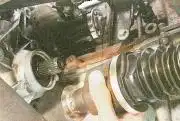Remove the engine assembly with the gearbox, lowering it down from the engine compartment
This requires a lift. to raise the front of the car higher.
In a garage setting where a lift is not available, a jack is required, as well as supports that are strong and high enough to place the raised front of the car on them, which will make it possible to remove the engine from under it, lowered to the garage floor.
For convenience, remove the hood.
Depressurize the supply system (see Reducing the pressure in the supply system).
Remove the air filter (see Removing and installing the air filter).
Disconnect the wires from the battery and remove it from the vehicle.
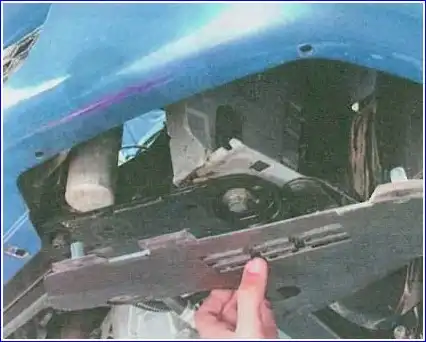
Remove the crankcase guard and engine splash guards.
Drain the cooling system (see "Changing the coolant").
If you are removing the engine for repair, drain the oil from the oil sump (see "Changing the engine oil and oil filter").
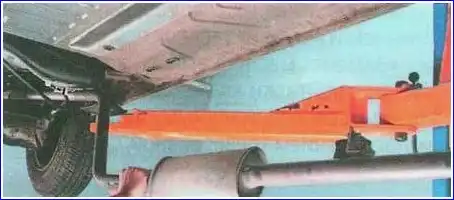
Remove the exhaust system (see "Replacing the elements of the exhaust system"), as its front pipe prevents the engine from lowering down.
Disconnect the wiring harness blocks:
- - from injectors;
- - throttle position sensors,
- - absolute pressure,
- - coolant temperature,
- - intake air temperature;
- - idle control.
Disconnect the harness connectors from the power steering pump pressure sensor;
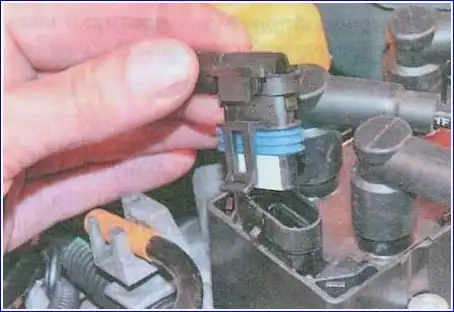

- ignition module, top dead center sensor;
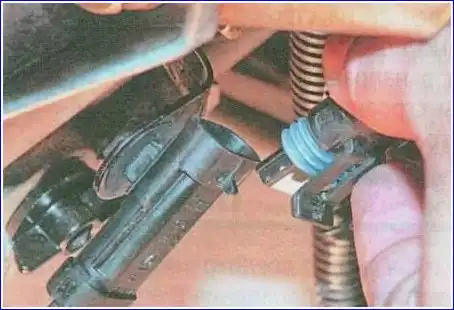
- oxygen concentration sensor in exhaust gases;

-knock sensor;
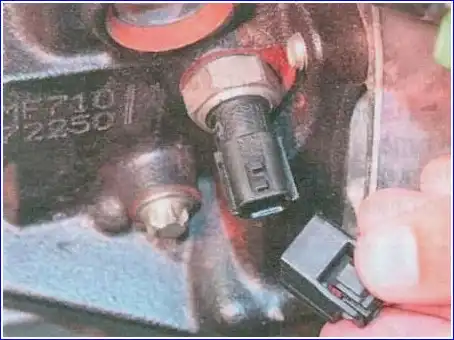
- oil pressure sensor;

- speed sensor;
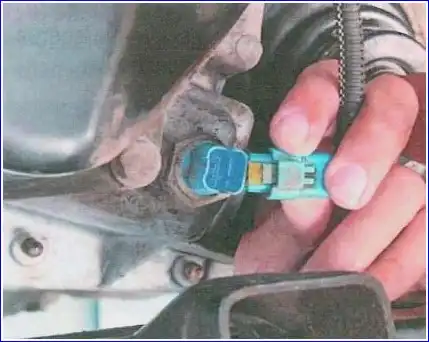
- and reverse light switch

Disconnect the two "mass" wires from the gearbox by unscrewing the bolts of their fastening
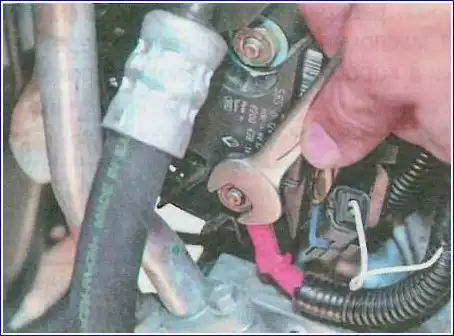
Disconnect the wires from the generator (see "Removing and installing the generator") and the starter

Bring out the mot the main harness from the holders on the engine (see "Replacing the cylinder head gasket") and move it to the side.
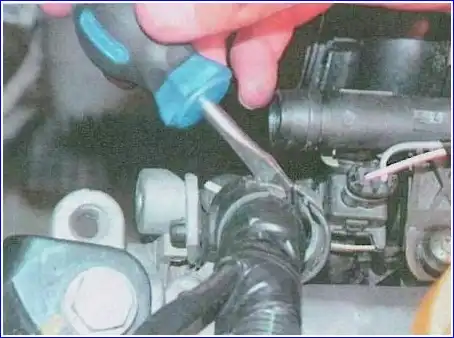
Disconnect the front end of the throttle cable from the intermediate lever on the intake pipe and from the bracket on the engine (Replacing the throttle cable).
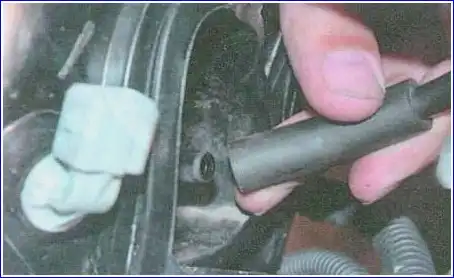
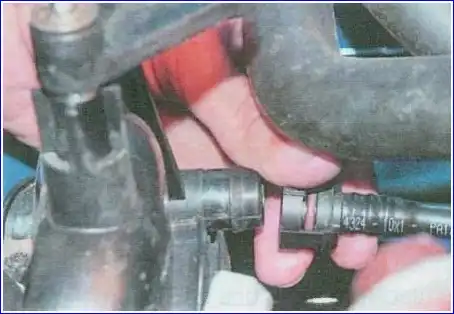
Disconnect the canister purge hose and the hose to the vacuum brake booster from the inlet pipe by squeezing its fasteners
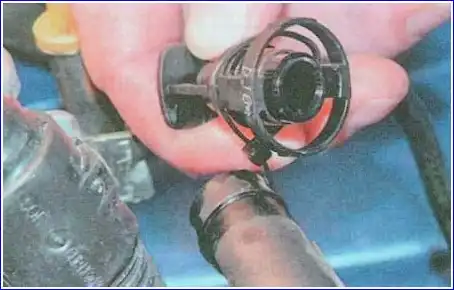
Disconnect the fuel hose from the fuel rail.
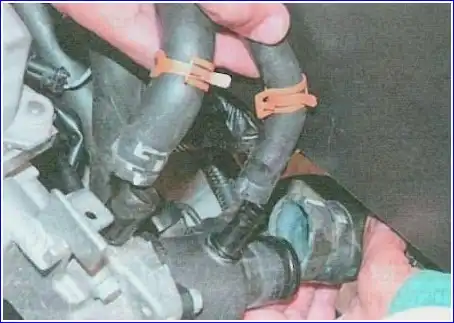
Disconnect the hoses from the thermostat pipes, cylinder head and water distribution pipe.
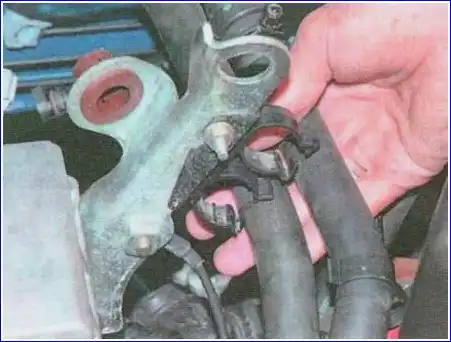
Remove the heater hoses from the holders on the bracket and lay them aside.

Remove the bolt holding the canister purge hose holder and move the hose to the side.
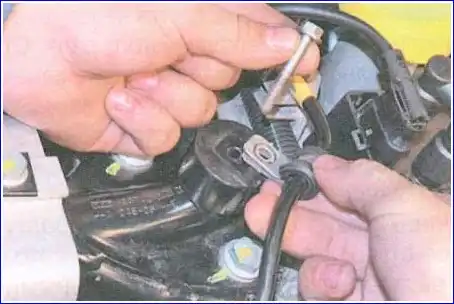

Remove the bolt securing the power steering pipe holder to the engine.

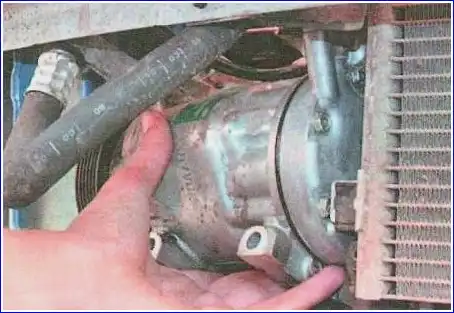
Remove the bolts securing the air conditioning compressor to the bracket and, without disconnecting the pipelines from it, take it aside and secure it in any way possible (for example, by tying it with wire).
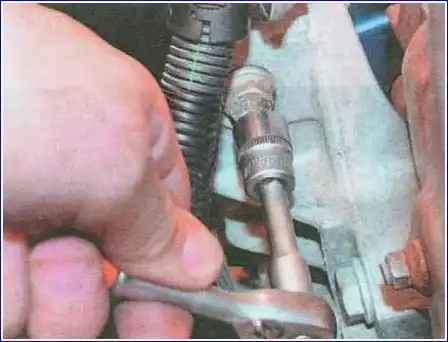
Similarly, disconnect the power steering pump from the engine.
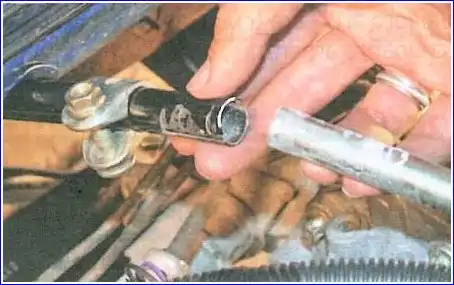
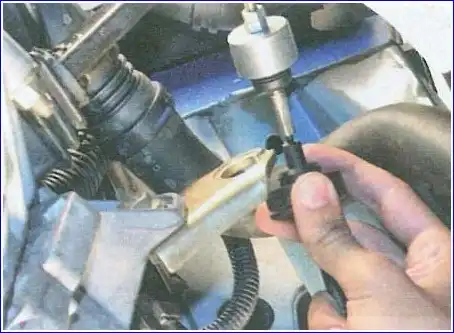
Disconnect the transmission control rod and the front end of the clutch release cable
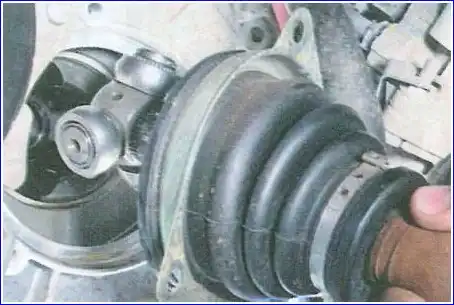
Disconnect not from the gearbox front wheel drives (see "Removing and installing front wheel drives")
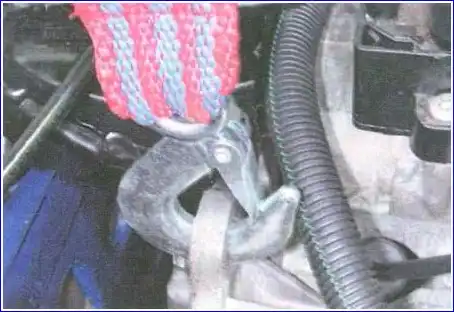
Remove the stretcher
Attach the hoist straps to the front and rear transport eyelets and tension the straps
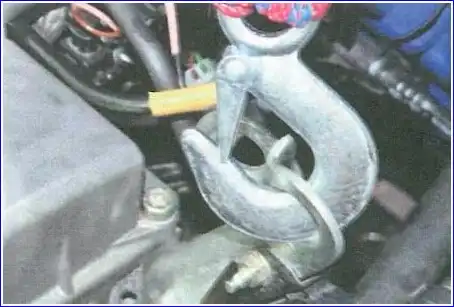
Remove the right and left powertrain mounts.
Check again that all wires, hoses and attachments are disconnected from the engine.
Lower the engine down to the floor.
Hang up the front of the car (raise the car on a lift) to a height sufficient to remove the power unit from under the car, and place reliable supports under the body.
Remove the engine from under the car,
Install the engine and all removed components and parts in the reverse order of removal, taking into account the following:
- - before installing the power unit, clean the threaded holes for fastening its supports with a tap;
- - be sure to replace the exhaust pipe gasket with a new one;
- - when connecting wires and pipelines, carefully monitor the correct location of them in the engine compartment, avoiding contact with heating and moving elements of the power unit.
After installing the motor, do the following:
Refill with oil (see "Changing the engine oil and oil filter")
Fill the gearbox with oil.
Refill with coolant (see "Changing the coolant").
Adjust accessory drive belt tension
Adjust the throttle actuator (see Adjusting the Throttle Cable).
Start the engine and check for fuel, oil and coolant leaks.
Check the oil pressure.
Listen to the engine, it should run smoothly, without extraneous noise and knocks.









